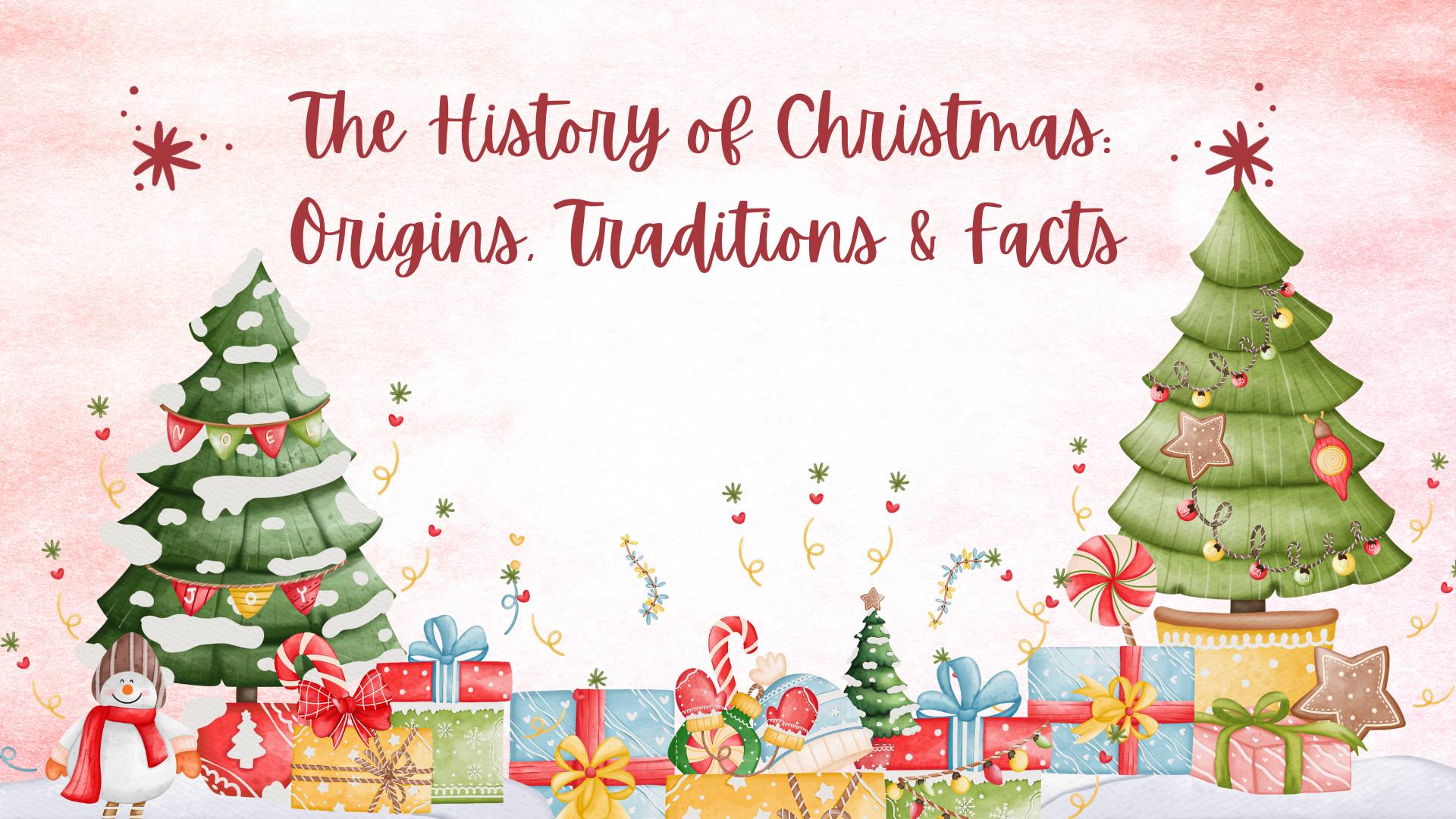History of Christmas : The holiday season is upon us, and one of the most widely celebrated and cherished holidays around the world is Christmas. But have you ever wondered how Christmas came to be? The origins of this festive holiday are fascinating and intertwined with ancient pagan and Roman traditions. In this article, we will take a journey through time to explore the history, traditions, and intriguing facts about Christmas.
The Origins of Christmas

Pagan and Roman Influences
The roots of Christmas can be traced back to both pagan and Roman cultures. In ancient Rome, two holidays were celebrated in December: Saturnalia and the birth of Mithra, the sun god. Saturnalia was a two-week festival honoring Saturn, the god of agriculture, and was known for its raucous and indulgent parties. On December 25th, the Romans celebrated the birth of Mithra, their sun god, with lavish festivities.
Pagan Winter Solstice Celebrations
Even before the arrival of Christianity, pagan cultures celebrated the winter solstice in December. This was the darkest time of the year, and people lit bonfires and candles to symbolize the triumph of light over darkness. The Romans incorporated this tradition into their own celebrations, further blurring the lines between pagan and Christian customs.
Christian Adaptation
As Christianity spread across Europe, the Christian clergy faced challenges in curbing the existing pagan customs and celebrations. Since the exact date of Jesus’ birth was not known, the Christian church decided to adapt the existing pagan rituals and transform them into a celebration of Jesus’ birthday. This allowed them to incorporate and Christianize the existing traditions, making the transition more seamless for the pagan population.
Christmas Trees: A Symbol of Life and Renewal

Pagan Tree Decorations
The tradition of decorating trees during the winter season can be traced back to pagan cultures. Pagan communities, in anticipation of the coming spring, would decorate their homes with evergreen branches. These evergreen trees symbolized life and renewal during the coldest and darkest days of the year. The Romans also embraced this tradition and adorned their temples with fir trees during Saturnalia, decorating them with bits of metal.
Germanic Pagan Influence
The modern tradition of Christmas trees originated in Northern Europe, particularly among the Germanic pagan tribes. These tribes worshipped the god Woden and decorated evergreen trees with candles and dried fruit as a form of worship. This Germanic pagan tradition was later incorporated into the Christian faith in Germany during the 1500s. Families started decorating trees in their homes with sweets, lights, and toys, giving birth to the Christmas tree tradition as we know it today.
The Legend of Santa Claus

The Story of St. Nicholas
The beloved Christmas figure, Santa Claus, has its roots in the story of Saint Nicholas, a Christian bishop born in southern Turkey around 280 AD. St. Nicholas was known for his generosity and compassion towards the poor and marginalized. Legends surrounding St. Nicholas abound, but one of the most famous stories is how he saved three daughters from being sold into slavery by providing them with a dowry. It is said that St. Nicholas tossed bags of gold through their window, which landed in their stockings hanging by the fireplace to dry.
Evolution of Santa Claus
As time went on, various European cultures adapted their own versions of St. Nicholas. In Swiss and German cultures, Christkind or Kris Kringle accompanied St. Nicholas to deliver presents to well-behaved children. In Sweden, Jultomten, a happy elf, delivered gifts via a sleigh drawn by goats. Father Christmas became the figure in England, while Pere Noel took on the role in France. In the Netherlands, Belgium, Luxembourg, Lorraine, France, and parts of Germany, Sinter Klaas was the name given to the St. Nicholas figure. It is from here that the Americanized Santa Claus emerged.
Next Story : Lana Del Rey and Blink-182 to Headline Festivals
Christmas in America: A Cultural Melting Pot
Early Christmas Celebrations
Christmas celebrations in early America were diverse, reflecting the various cultural backgrounds of the immigrants who settled in the New World. The Puritans, with their strict religious beliefs, banned Christmas celebrations due to its pagan origins and the rowdy nature of the festivities. However, other immigrants from Europe continued their own Christmas customs in their new homeland. Dutch settlers brought the tradition of Sinter Klaas to New York in the 1600s, while German immigrants introduced their tree traditions in the 1700s.
The Influence of Washington Irving and Clement Clark Moore
In the early 1800s, the American Christmas began to take shape, thanks in part to the works of renowned authors Washington Irving and Clement Clark Moore. Washington Irving wrote a series of stories that highlighted the idea of people from different backgrounds and social status coming together for a festive holiday celebration. One of Moore’s most famous works, “An Account of a Visit from St. Nicholas,” commonly known as “The Night Before Christmas,” solidified the modern image of Santa Claus as a jolly man flying through the sky on a sleigh.
The Iconic Santa Claus
In 1881, artist Thomas Nast created an iconic depiction of Santa Claus for a Coca-Cola advertisement. Nast’s illustration portrayed Santa Claus as a cheerful, fat, white-bearded man in a red suit with a wife named Mrs. Claus and surrounded by worker elves. This image of Santa Claus became embedded in American culture and further solidified the modern perception of Santa Claus as we know him today.
Christmas Becomes a National Holiday
After the Civil War, the United States was seeking unity and a sense of national identity. In 1870, President Ulysses S. Grant declared Christmas a federal holiday, further solidifying its place in American culture. Over time, Christmas traditions have evolved, but the spirit of unity and celebration remains at the heart of this beloved holiday.
Conclusion
Christmas is a holiday with deep historical roots and a rich tapestry of traditions. From its origins in pagan and Roman celebrations to the Christian adaptation and the evolution of Santa Claus, Christmas has become a holiday cherished and celebrated by people around the world. As we gather with loved ones and exchange gifts during this festive season, let us remember the history and traditions that have shaped Christmas into the beloved holiday it is today. Merry Christmas and happy holidays to all!




